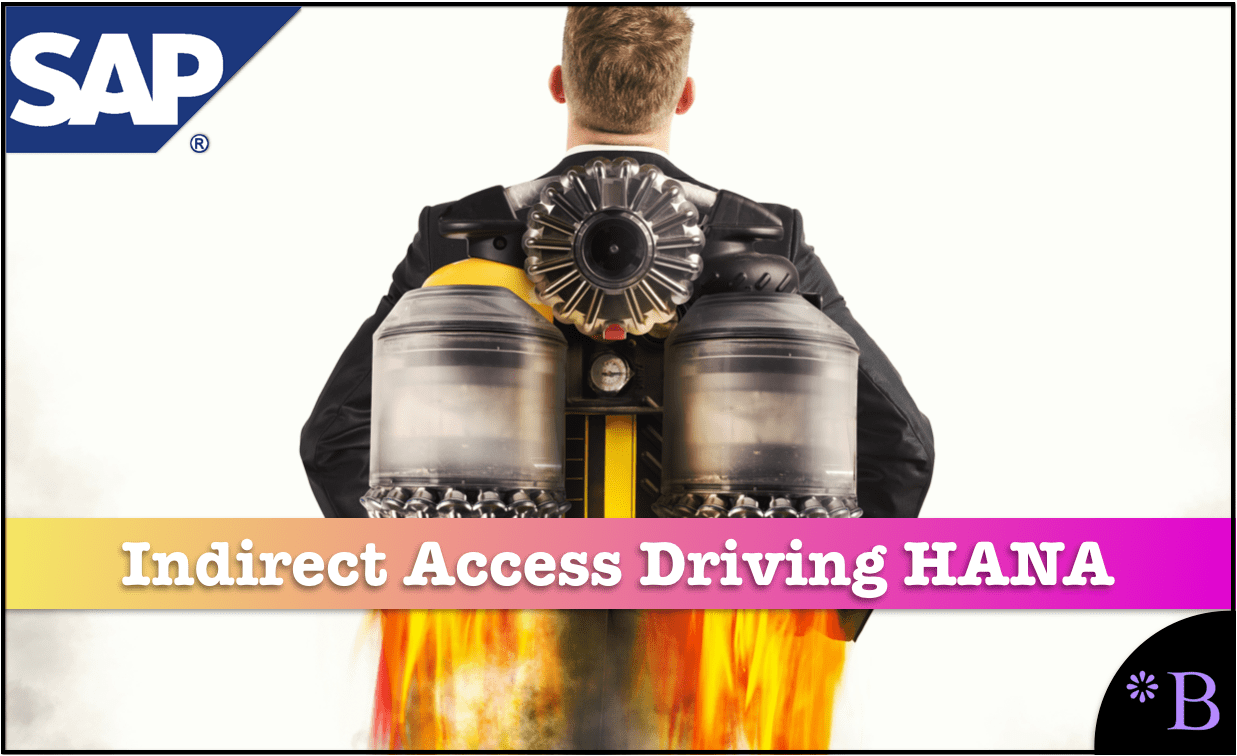How to Best Understand SAP’s Use of Indirect Access to Drive HANA Sales
Executive Summary
- Indirect access has been used to drive customers to HANA.
- We review how this strategy works and how it has not been covered in IT media.

Introduction
Indirect access is generally focused on applications and the best-known application of indirect access by SAP. And if you read articles on the topic of indirect access, they primarily cover applications. However, HANA has as many indirect access liabilities as does SAP’s applications. This is included in the article SAP Indirect Access and the HANA Police.
What is Happening in the Field with HANA and Indirect Access?
So the question is, what is happening with HANA and indirect access.
Well, quite under the radar, SAP is effectively using indirect access claims with HANA in two ways:
Using SAP Application Indirect Access to Sell HANA
SAP is using indirect access claims related to its applications to drive customers to HANA. The customer has a choice of what to purchase. But when the customer comes to the negotiation table, the SAP account executive will typically guide the customer into settling the indirect access claim by purchasing either S/4HANA or HANA. I have reports of tens of millions of dollars of indirect access claims by SAP. These claims are brought, just as with an indirect access claim designed to block the purchase of application from a competitive vendor after the company has decided to purchase a competitive application. This leads to the company move from one database vendor they had already selected to another database vendor or SAP.
Enforcing Indirect Access on a Preexisting HANA Install
Once HANA is sold, the most frequent use of indirect access is to get more from the customer than they intended to pay for HANA. This can be accomplished in multiple ways. One is to simply undersize the HANA database, and something will automatically happen if SAP’s assumptions regarding sizing are followed. This will cause the customer to have to go back and buy more HANA GB licenses, and after the decision to go with HANA has already been made. Secondly, SAP uses both a runtime license and indirect access to audit customers and come back later for more money. The main objective of the account executive is simply to get HANA sold. After it is sold, SAP has a multitude of ways of coming back later to charge for more.
There are several problems with being forced into purchase HANA, however, and one is that HANA is sold on exaggerated claims, as is covered in the article When Articles Exaggerate SAP HANA’s Benefits. And by force fitting HANA into areas that are not naturally a good fit, the likelihood of failure increases as is covered in the article Is HANA the Right for the EDW?
Giving in Too Easily to SAP’s Indirect Access Claims
Companies are being beaten by SAP and acquiescing to their demands on indirect access far too quickly, which brings up all manner of future liabilities. Part of this has to do with SAP customers being too willing not to take indirect access seriously and to prepare before receiving an indirect access claim.
Amazingly, the majority of SAP customers still don’t use SAM software, which is a first step to protecting oneself against indirect access claims, a topic which is covered in the article, Taking a Multidimensional Approach to SAP Indirect Access.
Conclusion
Customers should consider very careful about being either pushed into HANA through an indirect access claim by SAP and be aware of the indirect access liabilities of HANA itself. These are liabilities that no other database vendors have as no other database vendor claims Type 2 indirect access.